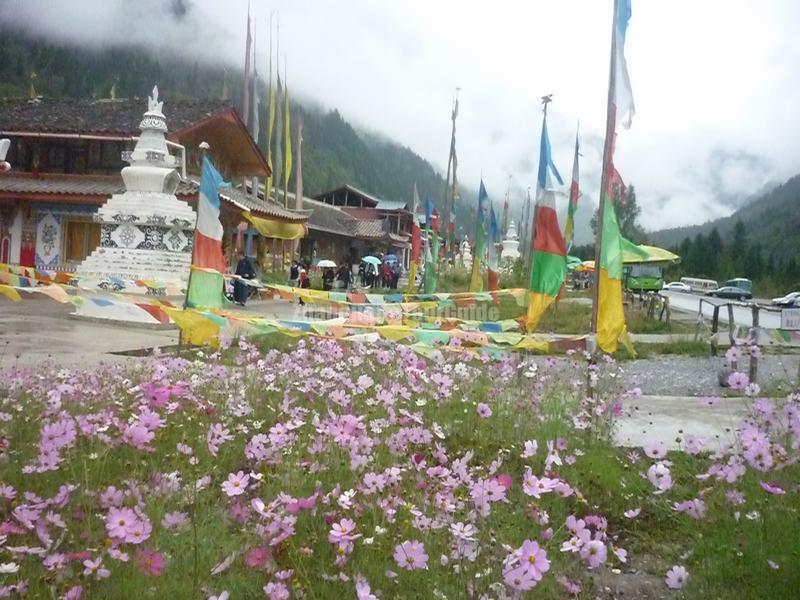In the northern Sichuan Province, close to the border of Northwest China’s Gansu Province, Jiuzhaigou is a breathtaking alpine valley discovered by lumberjacks in the 1970s. The national park now attracts an annual influx of nearly one million tourists from all over the world.
Jiuzhaigou refers to the “Y” shaped three valleys of Shuzhen, Rize, and Zechawa, altogether covering an area of 720 square kilometers and stretching out for a total length of over 50 kilometers. It is a habitat of Tibetans, and the mountain lakes, called “haizi” (sea, or son of sea), shining like crystal mirrors, dotting in the depth of forests and snow mountains. At the upper most valleys run down northward and join together at Nuorilang to form the beginning of Shuzheng Valley. The height drop amounts to 1,000 meters or more from the joint of the two gullies to the outlet of Shuzheng Valley. Lining along the distance are 114 stepped lakes, between which are 17 waterfall groups, 11 torrents, and 5 calcareous tufa shoals, forming “a fairy land under the sky” that features in alpine lake groups, waterfall groups, and calcareous tufa shoals, as well as snow mountains, virgin forests, and Tibetan folklore.
Jiuzhaigou Valley National Park is rich with flora. At present it has 30, 000 hectares of natural forests, 2,576 species of higher plants as well as 400 species of lower plants. With the numerous lakes and various vegetations, Jiuzhaigou has a self complete ecological system, which provides the best habitats for wild animals. Investigation shows in the valley there are 170 kinds of vertebrates, and 141 species of birds, of which 3 are under ClassⅠstate protection, 4 under Class Ⅱ, and 10 under Class Ⅲ.
In December of 1992, Jiuzhaigou Valley National Park was inscribed on World Heritage List by UNESCO.



